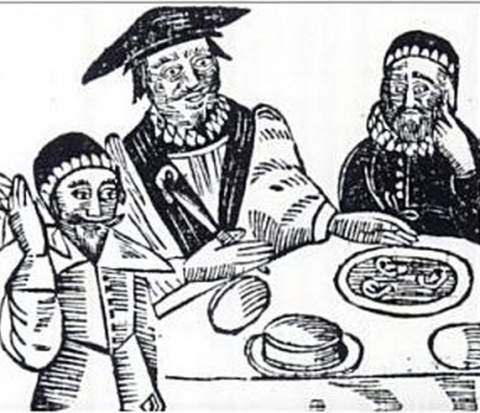
Simion Grahame (1570-1614) was a Scottish-born writer and courtier to James VI. Little is known about Grahame’s life. He was a good scholar who soldiered for a time, after which he traveled widely in Europe, possibly while in exile. In the early 1600s, Grahame returned to Scotland and turned his hand to writing, earning the patronage of James VI. He later moved to the Italian states and spent his final years as a Franciscan friar.
One of Grahame’s better known works was his 1609 Anatomie of Humors. Much of this manuscript dwells on human emotions, particularly melancholy or depression, something Grahame himself seemed familiar with. But it is also interspersed with advice about conduct, manners and how to forge and maintain good relationships with others.
In one chapter, Grahame urged gentlemen to keep their beards and moustaches clean, well trimmed and tightly curled:
“…A man is to be commended if he be [clean] in his linings, his hair well dressed, his beard well brushed and always his upper lip well curled… For if he chance to kiss a gentlewoman, some rebellious hairs may happen to startle in her nose and make her sneeze…”
Those who did not attend to their facial hair, wrote Grahame, were slobs, not fit to socialise with:
“[These] snotty nosed gentlemen, with their drooping moustaches covering their mouth and becoming a harbour for meldrops [mucus]… He will drink with anybody whatsoever, and after he hath washed his filthy beard in the cup… he will suck the hair so heartily with his under lip.”
Source: Simion Grahame, The Anatomie of Humors, Edinburgh, 1609. Content on this page is © Alpha History 2019-23. Content may not be republished without our express permission. For more information please refer to our Terms of Use or contact Alpha History.



